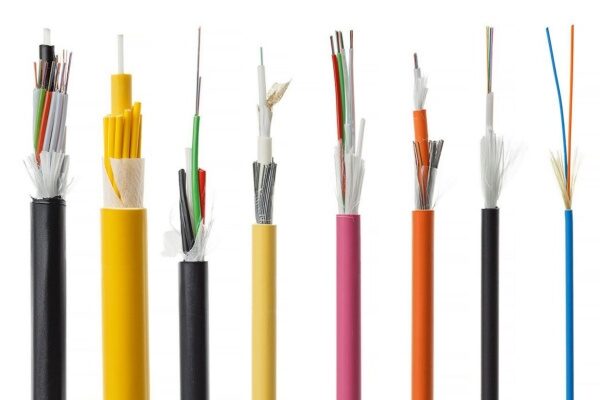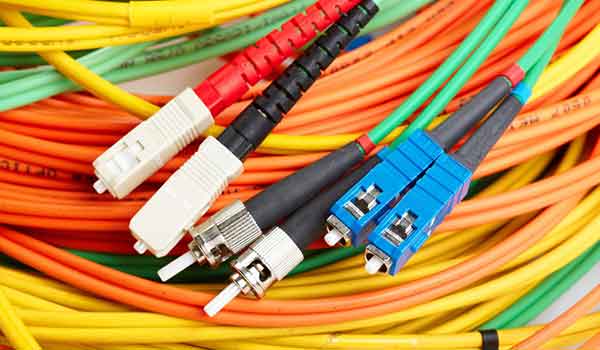

FIBER OPTIC CABLE VERI
Волоконно -оптичні кабелі є критичними компонентами в сучасних мережах комунікації, Увімкнення високошвидкісної передачі даних на великі відстані. Як підприємства та особи все частіше покладаються на швидке, Надійні підключення до Інтернету, волоконно -оптична технологія стала золотим стандартом для передачі даних. На ринку домінують два основні типи волоконно -оптичних кабелів: одномод і мультимодний волоконно-оптичні кабелі.
Розуміння відмінностей між цими двома типами волоконної оптики є важливим для прийняття обґрунтованих рішень щодо мережевої інфраструктури, оскільки кожен має свої сильні та слабкі сторони залежно від конкретного застосування. Ця стаття Кабель Veri заглиблюється в Ключові відмінності між одномодовим та мультимодовим волоконно-оптичним кабелям, Дослідження таких факторів, як дизайн, виконання, вартість, та сценарії використання.


Перед порівнянням одномодового та мультимодового волокна, Важливо зрозуміти основи волоконно -оптичної технології.
Волоконно -оптичні кабелі передають дані за допомогою легких сигналів, а не електричних струмів. Вони складаються з тонких пасм скла або пластику (ядро), оточений обшивкою, яка відображає світло в серцевину. Цей процес, названий Загальна внутрішня рефлексія, Дозволяє легкі сигнали проїжджати на великі відстані з мінімальною втратою сили. Волоконно -оптичні кабелі відомі своєю здатністю забезпечувати більш високу пропускну здатність, зменшене втручання, і більше розширених діапазонів передачі, ніж Традиційні мідні кабелі.
Одномодне волокно (SMF) названий своєю здатністю носити світлові сигнали по одному шляху, або режим, за один раз. Це досягається за допомогою ядра з надзвичайно маленьким діаметром - типово навколо 8 до 10 мікрони. Обшивка, яка оточує серцевину, як правило, є 125 мікрони, що є стандартним для більшості волоконно -оптичних кабелів.
Невеликий розмір ядра обмежує кількість відбиття світла, Зменшення ослаблення (втрата сигналу) і дозволяючи сигналам подорожувати далі без деградації. В одномодових волокнах, Світло передається через серцевину по прямій лінії, що призводить до меншої кількості спотворень сигналу та більш високої якості передачі даних на більшій відстані.
Волокна з одномодовими призначені для спілкування на далекі відстані. Тому що вони мінімізують втрату сигналу та спотворення, Вони можуть передавати дані на відстані до 100 кілометри або більше без необхідності підсилювачів сигналу (підсилювачі). Ці волокна зазвичай працюють у 1310 нм і 1550 нм Діапазони довжини хвилі.
Ключові переваги включають:
Проте, Оптика з волоконно-волокон, як правило, потребує більш складних джерел світла, наприклад, лазери, і їх встановлення може бути дорожче порівняно з мультимодними волокнами.
Одномодне волокно-кращий вибір для:
Мультимодове волокно (MMF) отримує свою назву, оскільки вона може носити світлові сигнали по декількох шляхах, або режими, одночасно. Ядро мультимодового волокна значно більша, ніж володіння одномодом, Зазвичай навколо 50 до 62.5 мікрони діаметр. Більше ядра дозволяє декілька світлових сигналів (або режими) Попагати одразу.
Цей дизайн, при цьому дозволяючи більше даних проходити через кабель одночасно, Вводить більше роздумів про сигнал та модальну дисперсію (поширення світлових імпульсів), що призводить до більш високої втрати сигналу на більшій відстані. Проте, на короткі відстані, Мультимодне волокно працює ефективно і є економічно ефективним.
Мультимодні волокна оптимізовані для Комунікація на короткі відстані, як правило, менше ніж 2 кілометри, і часто використовуються в таких середовищах Місцеві мережі (Ланці) і Центри обробки даних Там, де потрібна передача високошвидкісних даних на коротші відстані.
Ключові характеристики включають:
Однією з переваг мультимодового волокна є те, що він може використовувати дешевші джерела світла, як от Світлодіоди, робить початкову вартість нижчою, ніж вартість одномісного волокна. Проте, Якість сигналу швидше погіршується з відстані, що робить його менш підходящим для передачі довгої передачі.
Мультимодове волокно зазвичай використовується в:
| Особливість | Одномодне волокно | Мультимодове волокно |
|---|---|---|
| Розмір ядра | 8-10 мікрони | 50-62.5 мікрони |
| Довжина хвилі | 1310 нм, 1550 нм | 850 нм, 1300 нм |
| Відстань | До 100 км або більше | До 2 км |
| Пропускна здатність | Практично необмежений | Високий, але обмежений порівняно з одномодом |
| Вартість | Вищий завдяки дорогим джерелом світла та обладнанням | Нижня вартість установки |
| Додатки | ТЕЛЕМУНІКАЦІЇ БІЛЬНІ відстані, дещо, Центри обробки даних | Ланці, Центри обробки даних, Кампусні мережі |
| Джерело світла | Лазер | Світлодіод або VCSEL |
| Ослаблення | Низький (Менша втрата сигналу) | Вищий (Більше втрати сигналу) |
Однією з первинних відмінностей між одномодним та мультимодним волокнами є пропускна здатність, яку вони можуть підтримувати. Одномодне волокна пропозиція Практично необмежена пропускна здатність Тому що вони передають світло через один режим. На противагу, мультимодні волокна Підтримуйте високу пропускну здатність на короткі відстані, але страждає від модальної дисперсії, що обмежує пропускну здатність на більші відстані.
Волокна з одномодовими призначені для спілкування з довгого відстані, з здатністю передавати дані 100 км або більше Без значної деградації сигналу. Мультимодні волокна, З іншого боку, обмежуються навколо 2 кілометри завдяки їх більшій ядрі та модальній дисперсії.
Вартість є важливим фактором при виборі між одномодним та мультимодним волокнами. Одномодні волокна потребують більш дорогих джерел світла (лазери) і приймачі, Зробити загальні витрати на встановлення та обладнання вищими. Мультимодні волокна, навпаки, дешевше встановлювати, оскільки вони використовують менш дорогі джерела світла, такі як світлодіоди або вертикальна клітка, що викидає лазери (Vcsels). Проте, Нижча початкова вартість припадає на компроміс у виконанні, особливо на більшій відстані.
Ослаблення відноситься до втрати сигналу на відстань. В одномодових волокнах, Ослаблення є мінімальним через єдиний світловий шлях, що дозволяє сигналу рухатися на більші відстані без деградації. На противагу, Мультимодні волокна страждають від вищого ослаблення, оскільки кілька шляхів світла (режими) втручатися між собою.
Розсіювання, конкретно модальна дисперсія, є ще одним ключовим фактором. Волокна з одномодовими переживають дуже мало дисперсії, оскільки існує лише один шлях для легкого сигналу для подорожей. У мультимодних волокнах, Модальна дисперсія може призвести до розповсюдження світлових імпульсів, коли вони проходять по кабелю, що призводить до спотворення сигналу на більші відстані.
The Вибір між одномодовими та мультимодними волоконно-оптичними кабелями залежить від декількох факторів, включаючи передбачувану заявку, Необхідна відстань передачі, і бюджет.
Як одномодові, так і багатомодові волоконно-оптичні кабелі мають свої переваги та недоліки, і рішення, за яким можна використовувати, залежить від конкретних потреб вашої мережі.
Коли люди чують термін, утеплений мінерал, many immediately think of harsh environments like…
У міру того, як телекомунікаційні мережі та системи електропередачі швидко зростають, the demand for reliable and cost-effective…
У масштабних нафтогазових проектах, Промислові кабелі - це не просто аксесуари—they are the "nervous…
У світі електричних зв’язків, кабельні вкладки—також відомий як кабельні вуха або кабельні клеми—є…
При виборі правого гумового кабелю для проекту електротехніки, it is critical to…
Dear partners and customers: January 29th, 2025 is the Chinese Lunar New Year – Spring…